 Ever had that sinking feeling?
Ever had that sinking feeling?
You hit the publish button and …
Nothing. Tumbleweed.
It doesn’t have to be that way. There are countless ways to get eyes on your content. However, Facebook is one of the most powerful.
Best thing? Promoting your content on Facebook doesn’t have to break the bank. You can start from as little as $1 per day.
How? Let’s dive in.
1. Create relevant content
You need to create content that’s valuable to the people you’re targeting. Ask yourself, who is this content for? Why would they spend time consuming it? Would someone who doesn’t know our brand share this?
To accomplish this, your content should do one or both of these things:
- Answer a common question your prospects ask
- Solve a problem or pain point your customer has
It also needs to be done in a way that’s engaging. Facebook’s vice president of product management, says a feed’s intent is to inform and/or entertain. Facebook wants its users to have a great experience so they stay longer. What content can you create that entertains, informs, and solves a problem?
Video content creation should follow the above tips and a few more to succeed on Facebook. You should:
- Make its run time less than 90 seconds (as short as needed to get across the main point)
- Keep it simple
- Include actionable advice
- Include a call to action
Stay consistent with your content creation. If you can post something great at least weekly, over time you will build a picture of what content works best and what doesn’t, which leads nicely to the next point.
Post regularly on @Facebook to learn what content works best (then promote it), says @MrGavinBell.
Click To Tweet
2. Analyze results
As you create content regularly, you can start to see what works and what doesn’t. Whether it’s video, written, or live content, you can see what brings a better reaction from the audience.
Facebook provides an incredible amount of data whenever you post content – reach, engagement (including reactions, comments, and shares), and engagement rate – and you can break it down by type of post. With video posts, you can access even more data, including the important average watch time.
TIP: Shoot for an average watch time of 10+ seconds. If yours gets between seven to 15 seconds, that’s great, and 15 seconds or longer is excellent.
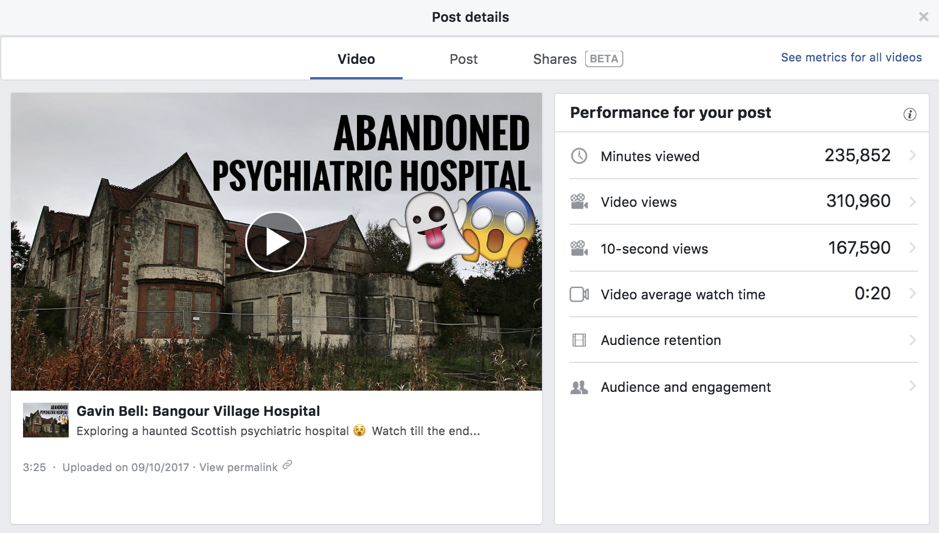
Explore the analytics to see what posts are performing best based on your goals (e.g., reach, engagement rate, shares). What unique attributes does that top-performing post have? Is it short? Longer content? Video? Does it contain an image with a person? Is it about a particular subject?
Then focus your promotion on what’s working best and double down on creating more content like that.
Focus your promotion on what’s working best & double down on creating similar #content, says @MrGavinBell.
Click To Tweet
HANDPICKED RELATED CONTENT:
3. Promote best-performing content
Use the data to inform your paid Facebook content promotion. You should advertise or boost your content to new audiences who aren’t fans or regular consumers of your Facebook content.
This is where the magic happens.
The first steps intentionally focus on organic performance. You want to use Facebook ads to amplify content that’s already working. If something does well organically, it’ll likely perform well with paid too. Focus on promoting evergreen content – the longer the content’s shelf life, the longer you can boost the post.
Caveat: Facebook often attempts to get you to boost posts that aren’t performing well, letting you know if you boost those posts, they’ll reach more people. Ignore Facebook’s advice. Focus on the posts that work for your goals.
Ignore @Facebook’s attempts to get you to boost posts that aren’t performing well, says @MrGavinBell.
Click To Tweet
When boosting a post, don’t use the visible big blue button. Do it through your Facebook ads manager because you can:
- Better control your promotion (and its parameters)
- Select more specific audiences
- Split-test criteria such as audiences more easily
The following screenshot illustrates all the goals offered by Facebook, broken into three broad categories: awareness, consideration, and conversion. Pick the goal best suited to what you want to achieve with your content promotion.
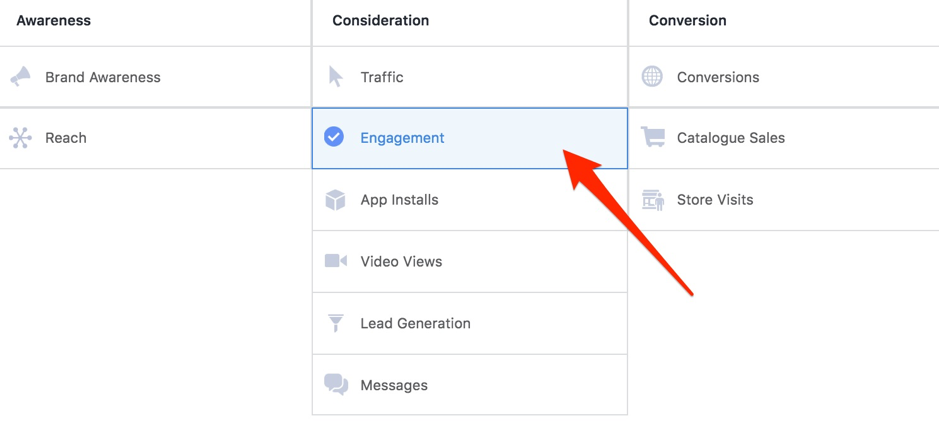
Go through the ad set creation steps, selecting your audience, placement, and budget. To create your ad, click on the drop-down menu to select the post to boost.
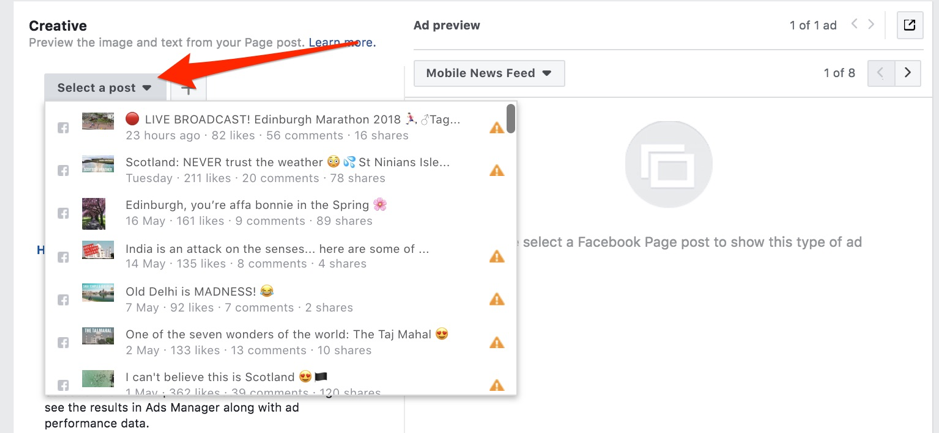
Then you can see how that post’s promotion would appear in mobile and desktop news feeds and adjust accordingly.
HANDPICKED RELATED CONTENT:
4. Retarget those who consume your content
Getting people to consume and engage with your content is important, but it’s only the start. If people are consuming your content but aren’t becoming customers, what’s the point? That’s what really matters to your bottom line.
How do you take people who have consumed your content and turn them into loyal customers?
Retarget them. Retargeting is hands down my favorite part of Facebook advertising.
Ever been to Amazon, looked at a pair of shoes and been followed around the web by an ad featuring that exact pair? That’s retargeting and you’re able to do the same effect with Facebook.
If someone reads one of your articles or watches a video on Facebook, you’re able to serve a follow-up ad for additional content. You can make the ad super relevant because you know the viewer already consumed your content.
Retargeting through @Facebook ads lets you create ads for content that’s super relevant, says @MrGavinBell.
Click To Tweet
For example, a personal training business creates and posts an article, Top 5 Reasons You’re Not Gaining Muscle. Through Facebook retargeting, the business could follow up with people who consumed that article with an ad inviting them to download a guide, 5 Exercises to Gain Muscle. See how relevant that is? It’s a no-brainer for the person to download that PDF.
How to create the retargeting Facebook ad
Let’s walk through the steps on how to do this for an audience that consumed your video.
In ads manager, click on the menu (top left), then Audiences.
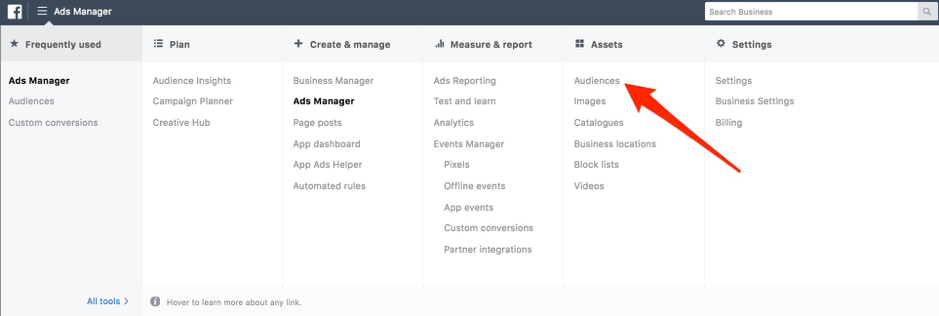
Click on create audience, custom audience, and then engagement. Once there, click on video.
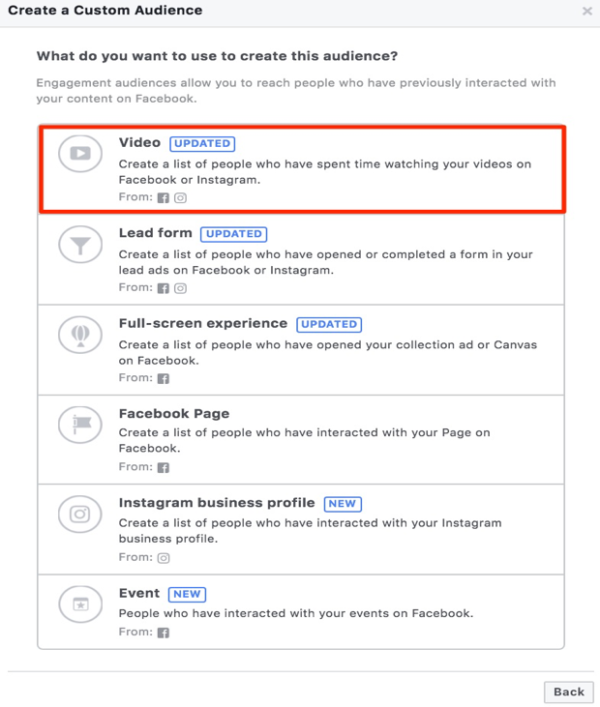
From there, click on “choose a content type” to select the video or videos for which you want to retarget viewers. Choose the time frame and name the audience.
TIP: If you’re new to retargeting, select all versions of that content type.
Now anybody who watches one of the videos you’ve selected becomes part of the custom audience.
With the custom audience parameters determined, you can pick that option when you create your content’s ad campaign (that’s the retargeting).
Summary
Those are the basics on how to use Facebook as a content distribution platform. Based on your organic results, you can pinpoint who you want your initial promoted content delivered to. Once they consume that content, you can then bring them deeper into your sales funnel with retargeting ads.
You’re building your audience, helping more people, and increasing your revenue, all within the one platform. Pretty neat, huh?
Don’t let tumbleweed sweep down your content plains. Gain more practical insight into content promotion at Content Marketing World Sept. 4-7. Register today using code BLOG100 to save $100.
Cover image by Joseph Kalinowski/Content Marketing Institute
The post How to Use Facebook Ads to Distribute Your Content appeared first on Content Marketing Institute.
from Content Marketing Institute https://ift.tt/2JxT1hk



No comments:
Post a Comment